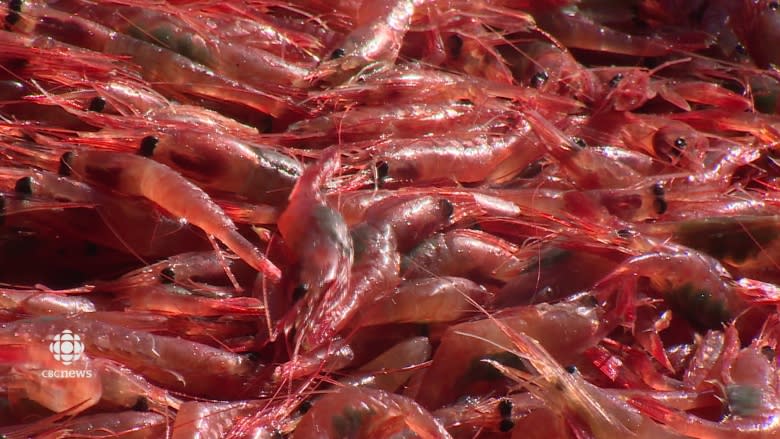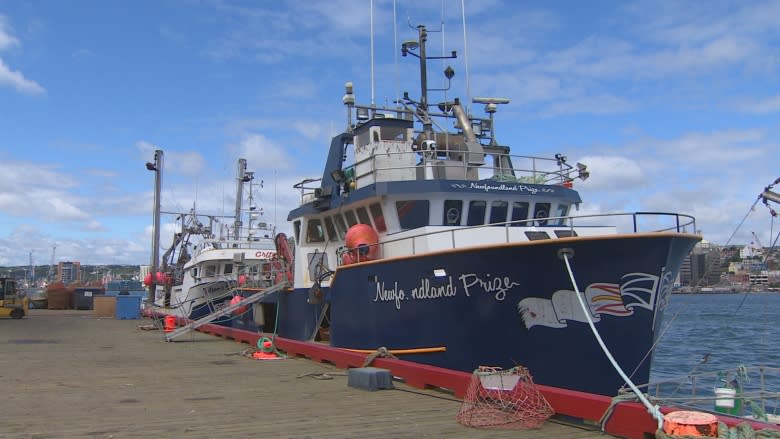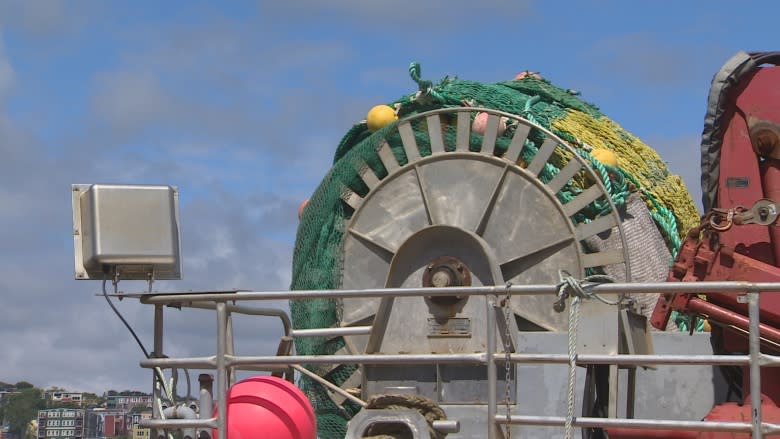A shrimp apocalypse? Anything is possible, says DFO scientist
A scientist with the Department of Fisheries and Oceans is defending its bleak assessment of shrimp stocks off Newfoundland's northeast coast and Labrador, and is blaming the resurgent codfish – which feed on shrimp – as a "driving factor."
Katherine Skanes is also firing back at those questioning the status of the stock.
"When the biomass was going up, they had confidence in our survey. Then when the biomass goes down, they lose confidence," she said.
Jaws dropped this past spring after DFO's annual northern shrimp assessment revealed that the "fishable" biomass in Area 6 had declined by a staggering 41 per cent between 2014 and 2015.
The biomass has been steadily declining over the past decade, but very few expected such a collapse.
DFO blames environmental conditions and predation for the decline.
Fogo Island fisherman Glen Best doesn't buy it.
He's been harvesting shrimp since 1998, and was among those shocked by the news.
"Last year we had the best catches we've seen since we've been catching shrimp," says Best.
"From June right up to the middle of August we were catching shrimp way faster and burning less fuel, bigger tows. It was unbelievable."
A big blow for the industry
DFO responded by slashing the quota in area 6 by 42.3 per cent for this year, to just under 28,000 tonnes.
That's a big blow for those who crew the 200-plus vessels that make up Newfoundland and Labrador's inshore fleet, the thousands of people who work in shrimp processing plants in the province, and the 10 or so factory freezer trawlers that harvest the stock year-round in these northern waters.
But putting aside the politics and the rhetoric, how confident is DFO of these "significant declines," prompting it to classify the health of shrimp stocks in area 6 as "cautious," just one step away from critical.
"We're very confident in the science," says Skanes.
"Our survey methodology hasn't changed since 1995. We go out about the same time of year on the same vessels. We sample the same scheme and we sample the entire area. So we are very confident in our methodologies."
Complete closure not being ruled out
DFO has already halted shrimp dragging in Area 7, which is south of Area 6, but areas 4 and 5, off the northern coast of Labrador, remain classified as "healthy."
Skanes says the fishable biomass in area 6 — estimated at 138,000 tonnes in 2015, down from 785,000 tonnes in 2006 — is at its lowest since DFO began conducting bottom trawl surveys more than 20 years ago.
"Each fall, we run a multi-species survey — we have two Coast Guard boats — we go out the same time each year and we randomly pick sets in each area from northern Labrador down to the south coast," she explains.
"We fish each set and we measure everything that we catch at those sets. That's the data that we use. We run it through a model which basically takes each catch and predicts a biomass in that area."
DFO also analyses fishing data, including the log books of harvesters.
So is it possible the biomass could decline to the point where the fishery could be closed completely, like it was in Area 7 two years ago?
"It's a large ocean. We don't fully understand what's happening, so anything is possible," says Skanes.
Shrimp now more important than crab for many
That would be disastrous for people like Glen Best.
Last season, big landings and attractive prices meant 70 per cent of his income came from shrimp.
That's a complete reversal from a few years ago, when crab was the dominate species.
"I'm not saying the (shrimp) resource is as healthy as it was 10 years ago. I don't think anybody believes that. But is it as bad as 40 per cent?" he questions.
Skanes says an apparent halt in the trend towards warming water temperatures may benefit the shrimp stock in the short-term, but "there's no signs that the environmental pattern will hold such that it will rapidly rebuild the stock."
So long LIFO
The shrimp industry off Canada's east coast has been in turmoil for months, fuelled mainly by the heated debate over the controversial last in-first out policy, pitting the year-round offshore trawlers against the inshore fleet.
That policy, which stipulated that the inshore fleet would bear the bulk of any quota cuts because of their late entry into the industry, was recently scrapped in favour of the widely used proportional sharing system.
That was a win for the inshore fleet, which received 70 per cent of the quota, but there's mixed reaction because there will still be less shrimp to catch.




